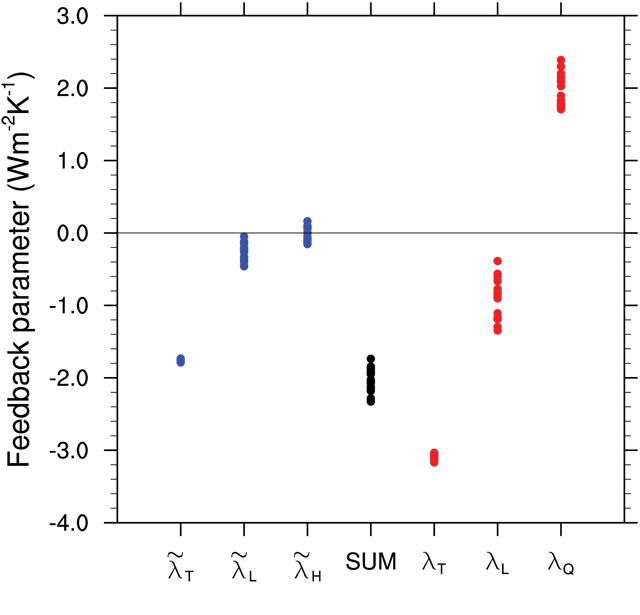April 13th, 2012
Key Findings
- Feedback analyses in climate models can be simplified by expressing feedbacks in terms of relative rather than specific humidity.
- This alternate methodology avoids the cancellation between water vapor feedback and the feedback associated with changes in the tropospheric vertical temperature profile that complicates the standard approach.
- It also reduces the inter-model spread, in the CMIP3 ensemble of models, in the strengths of the individual contributions to each model’s climate sensitivity, providing a simpler way of describing why models differ in their sensitivities.
Isaac M. Held (GFDL/NOAA), Karen Shell (Oregon State University). Journal: Journal of Climate. DOI:10.1175/JCLI-D-11-00721.1
Summary
We often use feedback terminology to help us understand why models differ in their estimates of the magnitude of the surface temperature changes produced by a given change in the Earth’s energy balance, such as that due to an increase in carbon dioxide. But several lines of evidence have suggested that the methodology used to define these feedbacks is far from optimal, making the typical model’s behavior look more complicated than it really is. Our goal in this short note was to propose an alternative methodology that simplifies the analysis in several ways.
This note describes an alternative way of analyzing climate models. It does not change the result of any model, but simply helps us understand models’ behavior. However, this simplification has practical advantages. Different models produce different values of the strengths of various feedbacks. In the proposed methodology the spread across models in these strengths is smaller than in the traditional framework. It achieves this by avoiding unnecessary cancellations in the traditional methodology that result from expressing the result in quantities (such as “water vapor feedback” and “lapse rate feedback”) that are not physically independent of each other.
This analysis helps point us towards the key features of models that we should be focusing on, which are consistent with their contribution to the total spread across models in climate sensitivity.
Known uncertainties
The spread in the strengths of climate feedbacks across models, on which this paper focuses, is interesting to the extent that the model ensemble is of high enough quality that the spread in results across the ensemble is useful in quantifying uncertainty.



